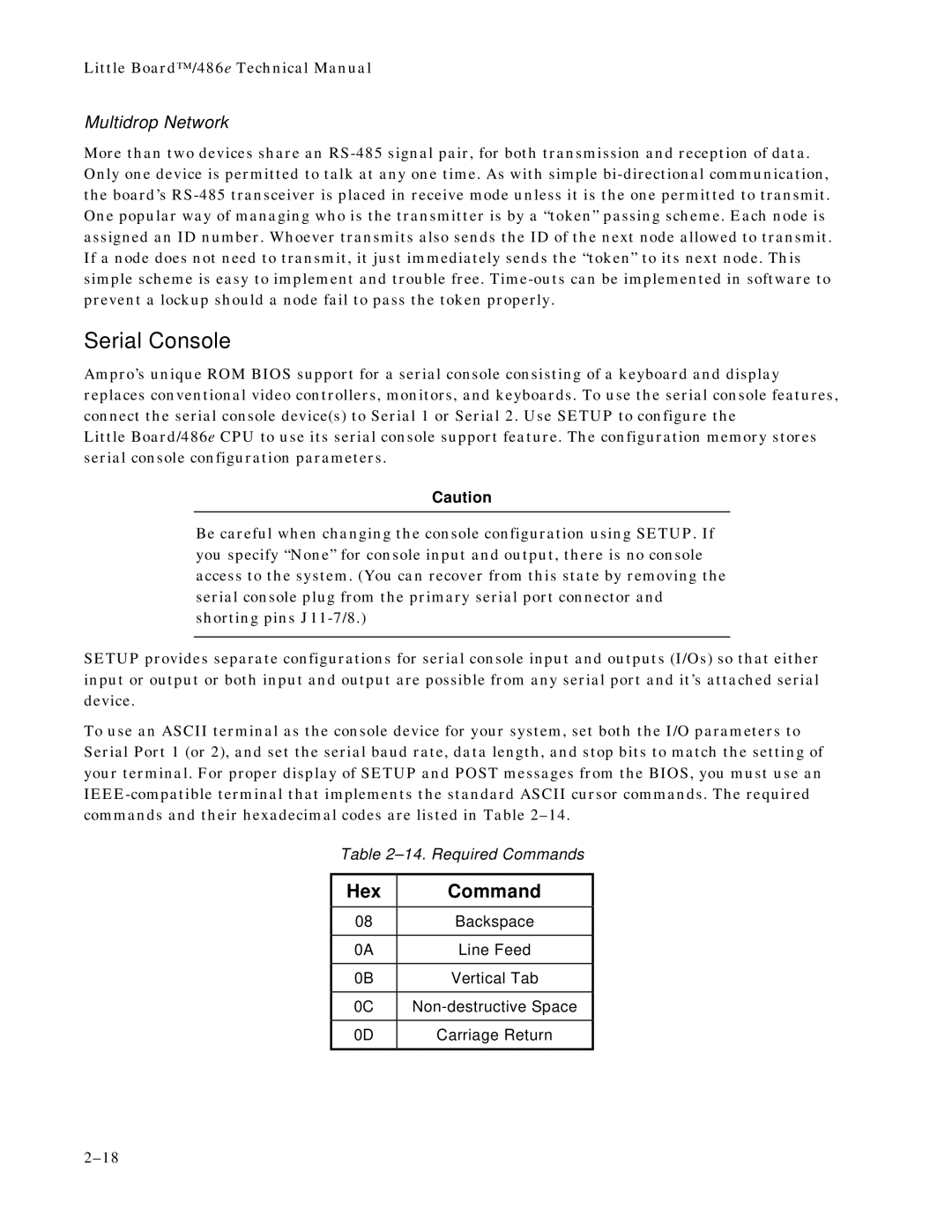
Little Board™/486e Technical Manual
Multidrop Network
More than two devices share an
Serial Console
Ampro’s unique ROM BIOS support for a serial console consisting of a keyboard and display replaces conventional video controllers, monitors, and keyboards. To use the serial console features, connect the serial console device(s) to Serial 1 or Serial 2. Use SETUP to configure the
Little Board/486e CPU to use its serial console support feature. The configuration memory stores serial console configuration parameters.
Caution
Be careful when changing the console configuration using SETUP. If you specify “None” for console input and output, there is no console access to the system. (You can recover from this state by removing the serial console plug from the primary serial port connector and shorting pins
SETUP provides separate configurations for serial console input and outputs (I/Os) so that either input or output or both input and output are possible from any serial port and it’s attached serial device.
To use an ASCII terminal as the console device for your system, set both the I/O parameters to Serial Port 1 (or 2), and set the serial baud rate, data length, and stop bits to match the setting of your terminal. For proper display of SETUP and POST messages from the BIOS, you must use an
Table
Hex | Command |
|
|
08 | Backspace |
|
|
0A | Line Feed |
|
|
0B | Vertical Tab |
|
|
0C | |
|
|
0D | Carriage Return |
|
|
